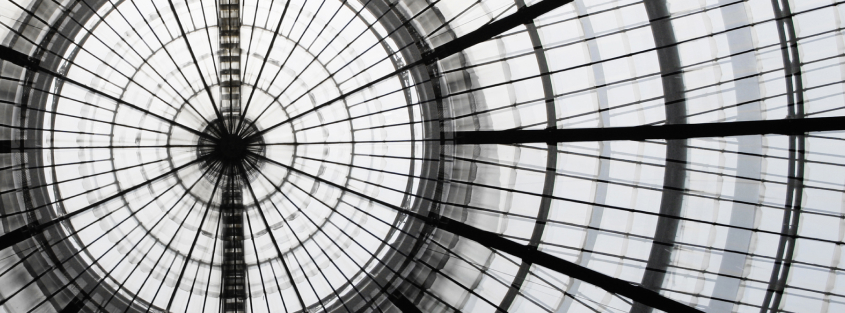What Is Shadow DOM?
Shadow DOM is a web standard that offers a way to encapsulate style and markup in web components. It is a part of the Web Components standard, which also includes HTML templates, Custom Elements, and HTML imports. The Shadow DOM standard introduces scoped CSS to the web for the first time, allowing developers to define styles that are encapsulated from the document.
Shadow DOM works by allowing you to attach a hidden, separate Document Object Model (DOM) to an element. This hidden DOM is known as the ‘Shadow DOM’, and the element it’s attached to is referred to as the ‘Shadow Host’. A Shadow DOM can have additional Shadow Hosts nested under it—this is called a Shadow Tree.
While this may sound complex, in practice, it’s a straightforward way to create components with isolated CSS and JavaScript.
The Shadow DOM is commonly used in everyday web interfaces. For instance, a video player on a web page employs shadow DOM to isolate its controls like play, pause, and volume slider. Thanks to the Shadow DOM standard, the styles and scripts of these controls do not interfere with the rest of the page.
Benefits of Using Shadow DOM
Encapsulation
When we talk about encapsulation in the context of Shadow DOM, we’re referring to the isolation of CSS and JavaScript. This means that the styles and scripts inside a Shadow DOM are scoped exclusively to that DOM and do not interfere with the rest of the page.
This encapsulation solves the issue of CSS bleeding, where styles from one part of an application leak into another, causing unexpected styling issues. With Shadow DOM, you can style elements without worrying about conflicts with other styles on the page.
Independence
Since a Shadow DOM is attached to a specific element, it forms a stand-alone environment. This means that the element and its Shadow DOM can be developed, tested, and deployed independently from the rest of the application.
This independence makes it easier to manage large-scale applications. Developers can work on individual components in isolation, reducing the complexity and increasing the maintainability of the application. It also enhances the performance of the application, as browsers can optimize the rendering process by only updating components that need to change.
Reusability
Reusability is another significant benefit that Shadow DOM brings to web development. A component built with Shadow DOM encapsulates all its required styles and behaviors, making it a self-contained unit. This means you can reuse this component across different parts of your application or even across different applications.
The reusability aspect of Shadow DOM not only saves development time but also ensures consistency across your application. By reusing components, you ensure that each instance behaves and appears the same way, providing a consistent user experience.
Shadow DOM vs. Virtual DOM
The concepts of Shadow DOM and Virtual DOM often come up in the same discussions, leading to some confusion about their differences and similarities. While both are related to the DOM (Document Object Model), they serve different purposes and aren’t directly comparable.
The Virtual DOM is a concept popularized by libraries such as React. It’s a lightweight copy of the actual DOM, and changes are first made to the Virtual DOM and then efficiently reflected in the real DOM. This process is known as “reconciliation” and helps optimize performance by minimizing expensive DOM manipulations.
Shadow DOM is a web standard for encapsulating styles and markup. It doesn’t concern itself with optimizing DOM updates, but rather with isolating components to prevent style conflicts and global scope issues.
In essence, the Shadow DOM and Virtual DOM are tools with different purposes. The Shadow DOM provides style and behavior encapsulation for reusable components, while the Virtual DOM optimizes the rendering of these components by minimizing actual DOM updates.
Potential Security Concerns with Shadow DOM
While the Shadow DOM standard is a major advancement in web development, it also raises new and potentially serious security concerns.
Leakage of Information
The first potential security concern with Shadow DOM is the leakage of information. By design, Shadow DOM isolates content, CSS, and JavaScript from the ‘Shadow Host’ (the main DOM of the page). However, this isolation is not absolute. For instance, the CSS ::part and ::theme pseudo-elements can leak styles from the shadow DOM to the Shadow Host. Additionally, JavaScript within the Shadow DOM can access and manipulate the Shadow Host, potentially leaking sensitive information.
Information leakage can also occur when elements within the Shadow DOM are given IDs or classes that are too descriptive. These identifiers may reveal sensitive information about the underlying data or functionality, potentially exposing it to malicious entities.
Manipulation from the Shadow Host
Another security concern is the potential for manipulation from the Shadow Host. While Shadow DOM provides a level of isolation, it’s not impervious to manipulation from the Shadow Host. For instance, the ::slotted() CSS pseudo-element can style slotted content from the Shadow Host, potentially overriding the intended styles within the Shadow DOM.
JavaScript in the Shadow Host can also target slotted elements, potentially manipulating the Shadow DOM’s content. Although the Shadow DOM is designed to encapsulate and isolate components, it’s crucial to understand that its boundaries are not impermeable.
Cross-Component Attacks
Cross-component attacks are another potential security concern with Shadow DOM. These attacks occur when an attacker exploits the relationships between different components on a webpage. For instance, an attacker could manipulate the Shadow Host to change the behavior of a component within the Shadow DOM, such as modifying event handlers or changing attributes of slotted elements.
Cross-component attacks can potentially lead to serious security issues, such as data leakage or unauthorized changes to the webpage’s behavior. To prevent these attacks, it’s essential to follow best practices for component isolation and interaction.
Exposure to External Scripts
Finally, the shadow DOM can be exposed to external scripts, potentially leading to security vulnerabilities. For example, an external script could access the Shadow DOM through the shadowRoot property of a hosting element, potentially manipulating the Shadow DOM’s content or functionality.
It’s also worth noting that scripts within the Shadow DOM can fetch and execute external scripts, potentially introducing security risks. Therefore, it’s crucial to ensure that only trusted scripts are allowed to run within the Shadow DOM.
Shadow DOM Security Strategies and Best Practices
Now that we’ve discussed the potential security concerns with Shadow DOM, let’s explore some strategies to mitigate these risks.
Sanitize Content
The first step in ensuring the security of your Shadow DOM components is to sanitize all content. This involves removing or escaping any potentially harmful content, such as scripts or malicious HTML.
Sanitizing content can help prevent a variety of security issues, including cross-site scripting (XSS) attacks and the execution of malicious scripts. It’s important to sanitize both the content that goes into your Shadow DOM components and any content that they output.
Use Closed Shadow Roots
Another effective mitigation strategy is to use closed shadow roots. When you create a shadow root, you can choose to make it ‘open’ or ‘closed.’ An open shadow root can be accessed and manipulated from outside JavaScript, while a closed shadow root cannot.
By using closed shadow roots, you can prevent external scripts from accessing or manipulating your shadow DOM components. However, it’s important to note that closed shadow roots are not a silver bullet. They can still be susceptible to other types of attacks, such as cross-component attacks or attacks via the Shadow Host.
Avoid Inline Event Handlers
To further enhance the security of your Shadow DOM components, avoid using inline event handlers. Inline event handlers can be a security risk because they can be manipulated from the Shadow Host.
Instead, use JavaScript to add event listeners to your elements. This way, the event handler code is encapsulated within the Shadow DOM and is protected from manipulation from the Shadow Host.
API Security Solutions
Finally, consider using API security solutions to protect your Shadow DOM components. These solutions can provide an additional layer of security by monitoring and controlling the APIs that your components use.
API security solutions can help prevent a variety of attacks, including cross-site request forgery (CSRF) attacks, API abuse, and data leakage. By monitoring and controlling your APIs, you can ensure that your Shadow DOM components are interacting with the rest of your application in a secure and controlled manner.
Shadow DOM Attack Prevention with Imperva
Imperva’s API Security ensures your API endpoints are protected as they are published, shielding your applications from exploitation, including Shadow DOM attacks.
Beyond API security, Imperva provides comprehensive protection for applications, APIs, and microservices:
Web Application Firewall can prevent attacks on Shadow DOM and other web technologies with world-class analysis of web traffic to your applications.
Runtime Application Self-Protection (RASP) – Real-time attack detection and prevention from your application runtime environment goes wherever your applications go. Stop external attacks and injections and reduce your vulnerability backlog.
Advanced Bot Protection – Prevent business logic attacks from all access points – websites, mobile apps and APIs. Gain seamless visibility and control over bot traffic to stop online fraud through account takeover or competitive price scraping.
DDoS Protection – Block attack traffic at the edge to ensure business continuity with guaranteed uptime and no performance impact. Secure your on premises or cloud-based assets – whether you’re hosted in AWS, Microsoft Azure, or Google Public Cloud.
Attack Analytics – Ensures complete visibility with machine learning and domain expertise across the application security stack to reveal patterns in the noise and detect application attacks, enabling you to isolate and prevent attack campaigns.
Client-Side Protection – Gain visibility and control over third-party JavaScript code to reduce the risk of supply chain fraud, prevent data breaches, and client-side attacks.














